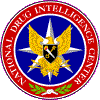
Rocky Mountain High Intensity Drug Trafficking Area Drug Market Analysis
June 2007
Production
Powder methamphetamine production in the Rocky Mountain HIDTA region has declined significantly over the past 5 years as a result of statewide precursor chemical control legislation, aggressive law enforcement efforts, and public awareness campaigns. According to National Clandestine Laboratory Seizure System (NCLSS) data, combined methamphetamine laboratory seizures2 in Colorado, Montana, Utah, and Wyoming decreased 83 percent from 2002 (717) to 2006 (123). (See Figure 2.) However, local production has not been eliminated because some producers have adapted their methods of operation to acquire the necessary precursors or to identify substitute chemicals that can be used to produce methamphetamine. For instance, local methamphetamine producers are forming "crews" to make multiple purchases of pseudoephedrine below legal limits from numerous retailers. Most methamphetamine laboratories in the region are small-scale operations that produce only gram quantities of the drug for personal use or for limited distribution to friends and associates. Mexican traffickers have exploited the significant decrease in local methamphetamine production with wholesale quantities of low-cost, high-purity ice methamphetamine that they produce in Mexico. Consequently, most local distributors prefer to purchase the drug from Mexican DTOs and criminal groups rather than risk the severe penalties associated with methamphetamine production or go through the effort of obtaining the precursors required to manufacture methamphetamine.
Figure 2. Methamphetamine laboratory seizures in Rocky Mountain HIDTA States, 2002-2006.
Source: National Clandestine Laboratory Seizure System as of April 5, 2007.
Crack cocaine conversion is a significant concern, particularly in Denver, Aurora, Colorado Springs, Ogden, and Salt Lake City, where crack is associated with high levels of abuse, property crime, and crack-related violence. African American street gangs, Hispanic street gangs, and independent dealers are the principal converters of powder cocaine to crack in the region. They usually purchase powder cocaine in half-pound to 1-pound quantities from Mexican sources and convert it to crack in small quantities at or near distribution sites.
Cannabis is cultivated at an increasing number of grow sites throughout the Rocky Mountain HIDTA region, particularly at indoor sites that produce high-potency marijuana in northern Colorado. For instance, the North Metro Task Force seized 50 indoor grow sites in the Denver metropolitan area during the first 9 months of 2006, a substantial increase from the 10 indoor sites seized in 2005. Caucasian and Hispanic local independent dealers and Asian groups are the primary operators of indoor cannabis grow sites in the Denver area, particularly in the western suburbs of Lakewood and Wheat Ridge and the southern suburbs of Centennial, Englewood, and Littleton. Additionally, law enforcement officials in Greeley, Colorado, report that Asian traffickers are attempting to establish high-potency cannabis grow houses to supply growing local demand for the drug and reduce reliance on suppliers from Canada and the Pacific Northwest. Sophisticated hydroponic cannabis grows have also become more prevalent in Salt Lake City and larger communities in Utah. A number of experienced grow site operators from the Pacific Northwest have moved to these areas and have assisted local growers in improving grow operations by sharing knowledge and supplying seeds.
Cannabis is also cultivated at outdoor grow sites in the Rocky Mountain HIDTA region, primarily by Mexican DTOs; the marijuana that they produce is primarily commercial grade. The outdoor grow sites operated by Mexican DTOs are typically located on public lands and in other remote areas of the region. The sites are often tended by laborers recruited from Mexico, who live at the sites throughout the growing cycle.
End Note
2. These figures includes seizures of powder methamphetamine laboratories; chemicals, glass, and equipment; and dumpsites.
